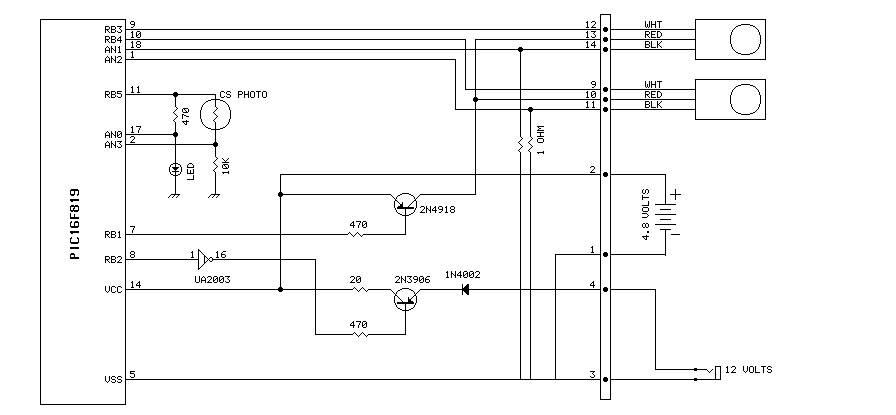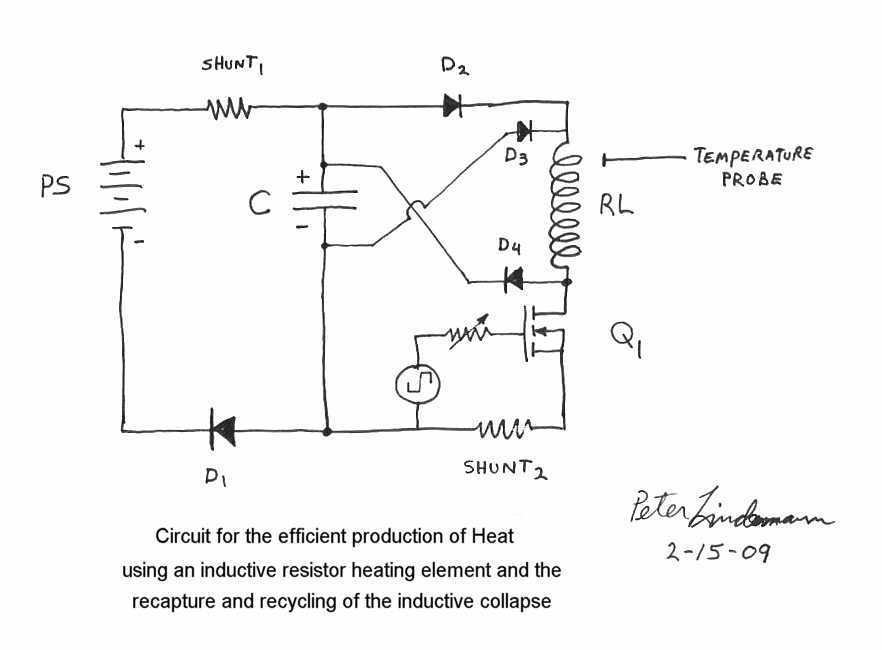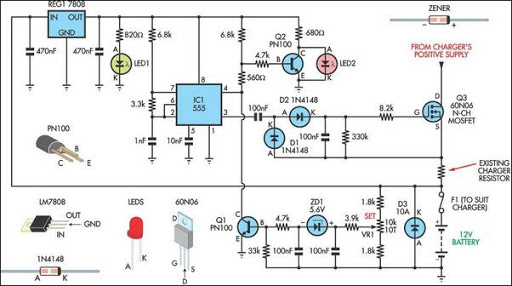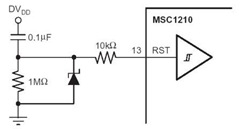
Simple but reliable car battery tester circuit
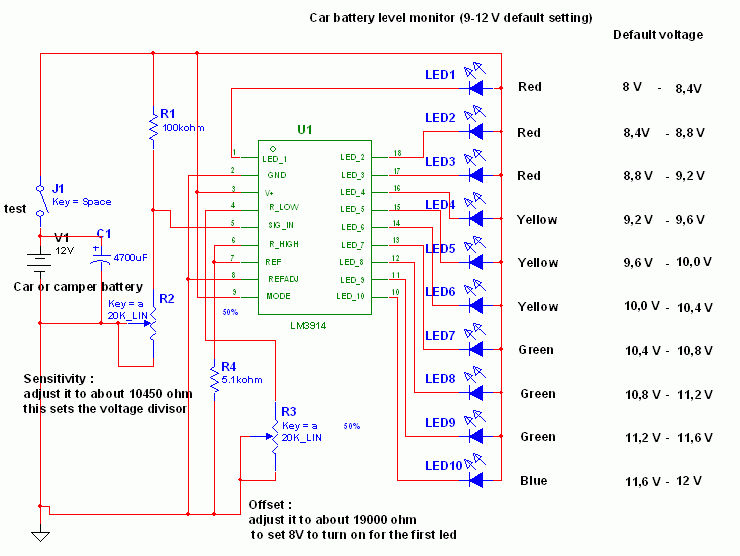
This circuit utilizes the widely available LM3914 integrated circuit (IC). The IC is straightforward to operate, does not require external voltage regulators due to its built-in voltage regulation feature, and can be powered from nearly any voltage source.
The LM3914 is a bar graph/LED dot display driver that can drive up to ten LEDs in a linear or dot mode, making it suitable for visual representation of analog signals. It operates within a voltage range of 3V to 25V, allowing for flexibility in various applications. The LM3914 has a built-in reference voltage that simplifies design requirements, as it eliminates the need for additional components to regulate the input voltage.
In a typical application, the circuit can be configured to measure and display voltage levels, audio signals, or other analog inputs. The configuration involves connecting the input signal to the IC's input pin, which then translates the analog value into a corresponding number of illuminated LEDs. The output can be customized by selecting the appropriate mode of operation—either bar graph or dot mode—by connecting a pin to ground.
The circuit design may also include additional components such as resistors to limit current through the LEDs, ensuring proper brightness and longevity. Capacitors might be added for filtering purposes to stabilize the input signal and reduce noise, enhancing the accuracy of the displayed readings.
This versatility and ease of use make the LM3914 an excellent choice for various electronic projects, including audio level meters, battery level indicators, and other visual signal displays. The simplicity of the design, combined with the IC's built-in features, allows for rapid prototyping and implementation in both educational and professional settings.This circuit uses the popular and easy to find LM3914 IC. This IC is very simple to drive, needs no voltage regulators (it has a built in voltage regulator) and can be powered from almost every source.. 🔗 External reference
The LM3914 is a bar graph/LED dot display driver that can drive up to ten LEDs in a linear or dot mode, making it suitable for visual representation of analog signals. It operates within a voltage range of 3V to 25V, allowing for flexibility in various applications. The LM3914 has a built-in reference voltage that simplifies design requirements, as it eliminates the need for additional components to regulate the input voltage.
In a typical application, the circuit can be configured to measure and display voltage levels, audio signals, or other analog inputs. The configuration involves connecting the input signal to the IC's input pin, which then translates the analog value into a corresponding number of illuminated LEDs. The output can be customized by selecting the appropriate mode of operation—either bar graph or dot mode—by connecting a pin to ground.
The circuit design may also include additional components such as resistors to limit current through the LEDs, ensuring proper brightness and longevity. Capacitors might be added for filtering purposes to stabilize the input signal and reduce noise, enhancing the accuracy of the displayed readings.
This versatility and ease of use make the LM3914 an excellent choice for various electronic projects, including audio level meters, battery level indicators, and other visual signal displays. The simplicity of the design, combined with the IC's built-in features, allows for rapid prototyping and implementation in both educational and professional settings.This circuit uses the popular and easy to find LM3914 IC. This IC is very simple to drive, needs no voltage regulators (it has a built in voltage regulator) and can be powered from almost every source.. 🔗 External reference
